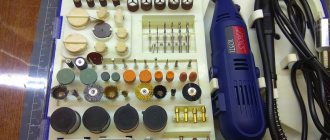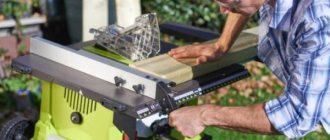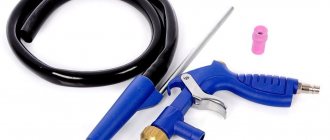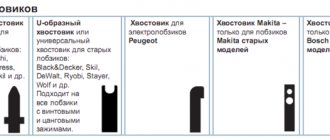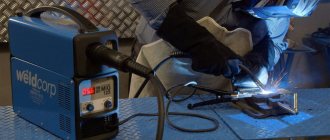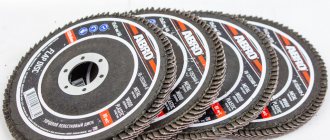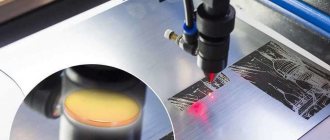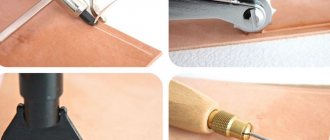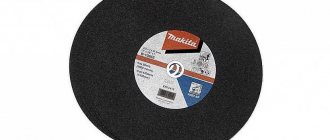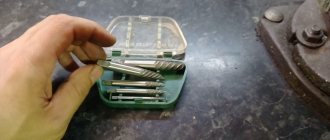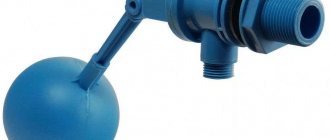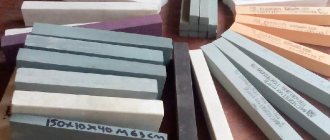Tapping threads
Among the existing detachable connections, threaded ones are considered especially reliable. At one time (before the first use of a screw-cutting lathe in the 17th century), each nut-bolt pair was made individually and they could not be interchangeable. In the 19th century, humanity began to apply special standards for the application of internal threads. It can be done either using a machine or using taps.
Design Features
A modern tap must have the following design elements:
- The intake (aka head) part is in the form of a hollow cone, necessary to begin the formation of the cutting profile;
- Several side grooves (usually from two to six), which will provide lubricant supply and chip ejection;
- A calibrating element, in the form of an elongated cylinder, which will complete the formation of the profile;
- The shank responsible for securing the tap in the clamp of the chuck or turn signal.
When making a cross cut, the formation of the groove will depend on two of its surfaces: the front edge of the cutting tooth of the tap and the back of this tooth.
Chip flutes can vary and be of the following types:
- Single-radius - they are used on calibration tools and are a cross-section in the shape of a circular arc;
- Straight-line - used for applying nut threads and their cross-section has the shape of the letter “U”;
- Mixed - the rear groove has the shape of an arc, and the front groove has the shape of a straight line (most universal tools are made according to this pattern).
Unique characteristics of taps
The main types of taps have only their own exclusive characteristics. Knowing these characteristics, you can always choose the right tap model:
- Threaded pitch;
- Profile and with its height;
- Maximum profile height;
- Threaded diameter outside;
- Length of the fence part;
- Back length;
- Corner of a fence cone.
IMPORTANT! It is worth remembering that any taps are divided into devices with left-hand and right-hand threads.
Types by Application
According to their area of use, taps are divided into:
- Bench tools - they have a square-shaped shank and are used manually. They come complete with a collar, through which rotation and threading occur. The set contains two taps, slightly different from each other in diameter, and where each removes only its share of the allowance from the surface of the hole being machined. Tools in such a set differ in the number of lines that are engraved on the shank or stamped there (particularly precise is indicated by three lines, intermediate by two, and coarse by a single line).
- Machine (machine) or machine-manual - they can produce cutting both manually and on industrial equipment (for these purposes, drilling/lathes and even large industrial processing centers are required). Unlike the above mentioned ones, these taps have a shortened tapping element, since the alignment of the axes is ensured by the machine. They are made from high-quality tool steel, are heat-resistant, and are little susceptible to mechanical pressure.
- Nuts - they are used in automatic machines for applying threads inside nuts. In terms of their design, they are distinguishable by their more elongated shank, which has a smooth cylindrical shape. Upon completion of the thread rotation, the nuts move one after another to the shank, waiting there for the end of work throughout the series. After serial production is completed, the shank comes out of the chuck, and all the resulting nuts fall into the receiving tray.
Differences in types based on design features
Taps according to their design can vary greatly from each other:
- Grooveless - they are used when interacting with soft/viscous materials and therefore have very small grooves (ductile materials include light metal alloys and several types of low-carbon and high-alloy steels);
- Screw - they contain grooves in an upward spiral, through which threads are made inside blind holes on production machines/automatic equipment;
- Stepped - the working element is divided into two sectors, the first cuts and the second smoothes;
- Combined - a drill is installed directly in front of the entry element, during one approach a hole is drilled and a thread is applied there;
- Broaches - they are needed for applying threads in passing holes using a lathe;
- “Bell” type - they are needed for applying threads of increased diameters (up to 0.5 meters) and include several cutting systems that are fixed in a common frame.
There are also exclusive designs that are determined by special production tasks.
Types of applied threads
Each thread size and type requires its own taps. They are not interchangeable, just like threaded ones. The main types may differ:
- Metric - denoted by the letter "M" is a triangular isosceles profile, where the apex angle is 60 degrees, and its dimensions are determined in millimeters;
- Inch - denoted by the letter “W”, its profile is a pointed angle of 55 degrees, and the diameter is displayed in inches and fractions, and the number of turns per inch is used as a pitch mark;
- Pipe - its difference is the different inclination of the rear/front parts of the profile, which ensures a guaranteed connection and also prevents self-unwinding.
Manufacturing materials
All taps endure large mechanical/thermal impacts during operation, and the tool itself must cut a large number of holes at this time. Accordingly, high-quality tool steels are required for production materials:
- Manual models - U10A or U12A - high-carbon types of steel;
- Machine models – PM5 high-speed steel;
- For automatic machines with increased productivity - hard alloys with increased heat resistance.
IMPORTANT! However, such metals have one major drawback - if damaged, the tap for threading cannot be drilled/removed freely.
Technological process of threading
In total, it includes four main stages:
- The preparatory stage is the selection of a drill of the required diameter and the implementation of drilling, while it is impossible to prevent the drill from leaving. Before this, it must be sufficiently sharpened, otherwise the material will overheat and the reliability of the thread will decrease. The hole is countersinked, and in the case of a blind hole, a small allowance must be given in relation to the depth;
- Direct cutting - at this stage, all movements performed are carried out measuredly, clearly and accurately, you must not allow lines to be missed, but use all three in sequence from rough to precise;
- Cleaning stage - here the passage holes are cleaned with a wire brush, and the blind holes are cleaned with pressurized air or a construction vacuum cleaner;
- Checking stage - here you need to screw the screw into the existing hole, and the entry should be smooth along the thread, without unnecessary effort and any distortions.
Damage to the tap - possible causes and their elimination
The instrument in question, naturally, is not entirely durable and is prone to simple obsolescence and natural wear and tear. The most common cases of damage:
- Warping;
- The working opening is too narrow;
- Excessive force applied by the operator to the gate;
- Failure to follow the reverse half-turn rules at the end of each full turn.
If any of the above cases occur, then there is no need to rush and try to run the thread faster or try to skip the tap from the set. All this can result in temporary losses, and therefore all extraction actions should be carried out slowly.
Which steel is better r9m3 or r6m5
With what?
I'm not very familiar with quick cutters. There is one r6m5 knife. It doesn't seem bad. This is where my knowledge ends. And about p9K 5, I haven’t even heard anything at all. Logically, cobalt should make him completely evil? I heard. I'll take it with cobalt
Or just R6M5? (without K5). How will he behave? Or don’t bother with quick-cutters and take a ShKh15 from a good blacksmith and not bother?
Now I'm scratching my head. Which is still preferable))
Now I'm scratching my head. Which is still preferable))
Not familiar with p9? What properties does cobalt provide?
Not at all like that. The presence of cobalt makes steel more resistant to overheating, slightly increases hardness, and makes it more brittle. (Not to be confused with increasing the amount of cobalt in hard alloys).
Not at all like that. The presence of cobalt makes steel more resistant to overheating, slightly increases hardness, and makes it more brittle. (Not to be confused with increasing the amount of cobalt in hard alloys).
That is, p6m5 would be better for a knife? Shouldn't you mess with p9k5?
Not at all like that. The presence of cobalt makes steel more resistant to overheating, slightly increases hardness, and makes it more brittle. (Not to be confused with increasing the amount of cobalt in hard alloys).
Well, then explain what structures cobalt forms and how it interacts with carbides?
Cobalt quick-cutters are the most resistant, but where does the data on increased fragility come from? Even based on the assigned cutting modes, this is not the case.
Well-prepared carbon is one of the best options for a knife.
Well-prepared carbon is one of the best options for a knife.
Wrong. ShKh is more fragile compared to forged R6M5K5. Cobalt quick cutters are VERY different from regular ones, even when cutting metals. You are not competent enough in this matter.
Wrong. ShKh is more fragile compared to forged R6M5K5. Cobalt quick cutters are VERY different from regular ones, even when cutting metals. You are not competent enough in this matter.
If you think I am not competent enough on this issue, maybe you can give a more detailed answer.
Source
Applying threads using dies
Connection using bolts can easily be called the most popular type of fastener. However, even high-quality carvings will deteriorate over time. And here there are two ways - you can turn to a professional locksmith for help or apply the thread yourself. In any case, for this operation you will need a set of drawers or dies - this is the name given to hand tools for applying external threads. Using them, it is possible to quickly restore worn-out hardware or produce the required part for an existing stud/bolt.
Classification of dies (dies) by design
The first characteristic that distinguishes one die from another is the body design. According to this indicator they are divided into:
- The dies are rounded - their body is a full-fledged ring through which the workpiece is passed. Due to the increased rigidity, the result is a high-quality helical profile on an excellent thread;
- Sliding dies (lerks) - they consist of 2 elements and are intended for the manufacture of threaded areas of different diameters;
- Split dies - their threaded diameter along the run can range from 0.1 - 0.3 millimeters, and therefore they must be used when applying imprecise threads.
Classification by thread direction
Based on this basis, dies can be divided into:
- Left-handed - rarely used and especially in specific auto parts, rotation mechanisms, and in cases where the right-hand thread can unwind;
- Right - the most popular direction, used on screws, bolts, axles.
Classification by profile
According to the profile, the dies can be:
- Metric - have a metric thread, marked with the letter “M”, followed by a number indicating the diameter in millimeters. Standard sizes are up to 68 mm, with each standard corresponding to a large or small pitch (in the Russian Federation this is regulated by GOST 9740);
- Cylindrical pipes - marked with the Latin letter “G”, their threads are measured in inches (relative to the metric system, 1 inch = 2.54 mm);
- Conical pipe - they will be marked with the letter “K”, they are used to obtain a threaded surface in the form of a cone in particularly critical connections that are installed in places where elements work under high pressure (for example, working units of production machines);
- Trapezoidal - their thread cross-section is an equilateral trapezoid. They are used in power pairs where rotation is converted into translational movements (for example, a nut and a lead screw in a bench and machine vice).
Die holders
In order to cut, one die will not be enough. It is also necessary to use an assistant device to hold and clamp the line - it is called a die holder. One such device is immediately designed for several sizes - from small to large. The die is installed inside and held in place by a screw.
Material of manufacture
For the production of dies, high-speed steel R18 or R6M5 is used as standard. They are good in terms of price/quality parameters, have an extended service life and do an excellent job with minor repairs and household work.
Thread cutting technology using dies
Basically, the principle of action is quite simple, however, there are some nuances here:
- At the preparation stage, you need to grind off a small blunt on the end of the part using a file (the tool will cut better);
- Firmly fasten the die in the holder, make sure that it does not rotate;
- Perform two full turns, slightly pressing the lever with your hand;
- After the tool has entered the part, you need to perform 2-3 full turns and one half-turn back - this way the application is done more efficiently.
IMPORTANT! It is necessary to constantly monitor the position of the holder in relation to the element being processed - it must always be perpendicular and not tilted!
Features of choosing a set of dies and taps
First of all, you need to clearly separate all the tools and navigate the set. There are professional versions of the kits, and there are also amateur ones intended for household use.
First, you need to decide on the type of dies/taps. For example, which system is supposed to be used more preferably - inch or metric. In Russia, the metric system is more often used. Here you can visually identify the links of this system by their conical shape and the established metric thread pitch. It is also worth taking into account the fact that the threads of the blade should have a triangular profile - this can be seen from the last turns of the blades. Thus, using such a tool, the nut can be screwed onto the restored thread.
The accuracy of the required cutting will be achieved through split dies, and if precise cutting is not needed, then it makes sense to take a set with solid dies. Of course, most professionals advise purchasing a set that contains all existing types of cutting.
Separately, we need to mention the cases - the sets can be located in convenient plastic or wooden boxes, they allow you to comfortably transport the entire tool. And if necessary, it’s easy to use it.
Regarding the material of manufacture - in this case there is no need to speculate much - the tool, by definition, is made of high-strength high-carbon steel. However, you should still avoid outright counterfeiting - usually Asian “no-name” manufacturers make their sets from soft metals.
Drill steel grades - which ones are better?
Nowadays, buying a high-quality metal drill is a real problem; most drills are Chinese, their quality leaves much to be desired. The quality of a drill depends, first of all, on the grade of steel from which the drill is made.
Most modern metal drills are made from R6M5 steel, although the difference between modern drills and drills from the USSR (with a quality mark) is simply huge, Chinese drills instantly roll up and it is impossible to drill even an ordinary corner made of 3mm iron with them. One drill is enough for several holes. However, there are also high-quality drills that last a long time.
Let's look at the steel grades, because the quality and durability of the drill depends on this.
P18 is now a legendary steel. Containing 18 percent tungsten, this steel supports metal processing even at high speeds. Drills made of P18 steel do not overheat, endure for a long time and drill well. True, finding the real ones is a whole problem. In Soviet times, r18 steel was used very widely for the manufacture of metal-cutting tools, but after the 70s, tungsten reserves were depleted and it was replaced by steel with a lower tungsten content - r6m5.
R6M5 - 6 percent tungsten, 5 percent molybdenum. Standard steel for metal-cutting tools. If the drill for metal is a Soviet one made from R6M5, then it is perfect for everyday use at home; such drills last for a long time, although they cannot drill through more hardened iron. The following drills with the addition of cobalt are suitable for this.
Rating of the best sets of taps and dies for 2022
Manual sets
3rd place: 5545 ERMAK M3-M10
An excellent and inexpensive set of domestic production, perfect for household needs. Although the set of tools is small, it is capable of coping with the most common household tasks. The case is made of plastic and has foam recesses for storing tools.
| Name | Index |
| Number of items | 14 |
| Case material | Plastic |
| Total weight, grams | 600 |
| Manufacturer country | Russia |
| Dimensions, millimeters | 15x20x15 |
| Price, rubles | 1300 |
5545 ERMAK M3-M10
Advantages:
- Budget price;
- Durable tool material;
- Sufficient functionality for everyday tasks.
Flaws:
- Fragile case.
2nd place: Stayer Master 28020-h24
An expanded functionality kit from a foreign manufacturer. It is quite capable of coping not only with household tasks, but can also be used for simple minor repairs of auto parts. Supplied in a metal case, tool compartments are made of plastic.
| Name | Index |
| Number of items | 24 |
| Case material | Metal |
| Total weight, grams | 1200 |
| Manufacturer country | Norway |
| Dimensions, millimeters | 30x20x30 |
| Price, rubles | 2100 |
Stayer Master 28020-h24
Advantages:
- Advanced functionality;
- Adequate price;
- Dual measurement system (inches and meters).
Flaws:
- Inconvenient case.
1st place: “Berger” BG31TDS
In many ways, it is a universal kit, because it can be used for both plumbing and automotive parts. Most dies and taps for standard rifling are present in it. Excellent sharpening quality allows you to avoid using excessive effort when working. The case is made of steel and has a strong locking closure.
| Name | Index |
| Number of items | 31 |
| Case material | Metal |
| Total weight, grams | 1300 |
| Manufacturer country | Denmark |
| Dimensions, millimeters | 30x20x30 |
| Price, rubles | 3400 |
Berger" BG31TDS
Advantages:
- Excellent cutting quality;
- Reliable case;
- Durable tool material.
Flaws:
- In practice, there is no M12x1.25 die (it’s not in the photo, but it’s in the description).
Machine kits
3rd place: ZUBR Professional 28110-H24
Like most professional kits, this one is distinguished by a large number of tools included, a wide range of their applications, and the use of several marking systems at once. All tools are made of high-carbon durable steel and are able to withstand maximum loads when installed in machines.
| Name | Index |
| Number of items | 24 |
| Case material | Metal |
| Total weight, grams | 900 |
| Manufacturer country | Russia |
| Dimensions, millimeters | 30x15x20 |
| Price, rubles | 4700 |
BISON Professional 28110-H24
Advantages:
- Uses two systems - pipe and metric;
- Durable metal tool making.
Flaws:
- Not identified (for its segment).
2nd place: SKRAB 33895
This kit features a convenient arrangement of items in the case – taps on the bottom, dies on top. To hold the tool for internal threads, there is a special collar with embossed handles. A universal die holder for all sizes is also supplied. Users note the high quality of cutting both by machine and by hand.
| Name | Index |
| Number of items | 45 |
| Case material | Plastic |
| Total weight, grams | 1100 |
| Manufacturer country | Taiwan |
| Dimensions, millimeters | 30x20x30 |
| Price, rubles | 9700 |
SKRAB 33895
Advantages:
- Convenient arrangement of items in the case;
- Universal holder for lecterns;
- Equipped with a special collar.
Flaws:
- High price.
1st place: Matrix 773110
Maximum professional set of 110 items. Capable of performing absolutely any work, both domestic and industrial. Fully suitable for processing parts made of any materials - aluminum, cast iron, steel and copper. All tools are made of innovative ultra-strong cutting steel 9ХС.
| Name | Index |
| Number of items | 110 |
| Case material | Plastic |
| Total weight, grams | 1500 |
| Manufacturer country | Taiwan |
| Dimensions, millimeters | 50x30x50 |
| Price, rubles | 11000 |
Matrix 773110
Advantages:
- Current price/quality ratio;
- The tool is made of the latest steel;
- Practical versatility and multi-functionality.
Flaws:
- Not found.
